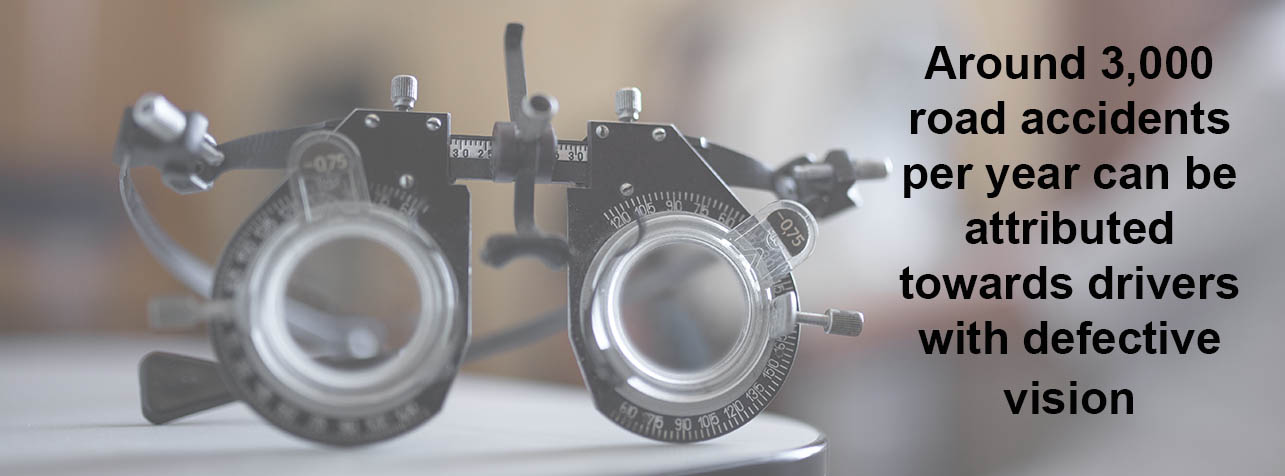Learning Zone
The Effects of Driving on Health
Long hours behind the wheel of a vehicle can impact on the health of drivers
We look at the concerns that could be affecting your drivers and how to keep them safe on the roads.
Long driving hours can have a detrimental effect on the well-being of drivers over time. Sitting in one position for up to 11 hours a day, week in, week out can affect your ability to stay safe on the roads. Fatigue, poor sleeping patterns, using prescriptions drugs and a general feeling towards poor physical health can all impact on driving ability.
What can fleet managers do to maintain healthy drivers?
We look at some of the common conditions that could be affecting your drivers and how you can support a healthy fleet.
1. Fatigue
A late finish attending a corporate evening, driving later at night or a lack of sleep are all contributing factors towards being fatigued at the wheel. Lack of sleep can be detrimental towards driving and the ability to respond effectively and quickly enough to conditions or incidents.
Any impairment to the decision-making process creates risk and reduces the ability to stay safe on the roads. One in six crashes on major roads due to sleep deprivation results in death. What’s more, 40% of fatigue-related crashes involve commercial drivers who are often in larger vehicles.
So, as a driver, what should you do if you are suffering from fatigue? Wherever possible, get plenty of rest before embarking on a long journey. Should you begin to feel tired during your journey, stop! Pullover as soon as it’s safe to do so and take a break. Go for a walk, get a coffee or energy drink and take in some fresh air.
Always plan ahead on long journeys to include rest breaks. if you are a commercial driver, you must never exceed the number of driving hours per day and ensure adequate rest periods in-between before each journey.
Fleet managers need to ensure that the correct rest periods are made by their drivers.
2. Defective eyesight
When was the last time that you had an eye test? The year may be a little vague for some drivers, but the minimum recommendation is every two years.
Now, think how many drivers take to the road each day that have less than perfect eyesight. A worrying thought! The minimum driving standard is to be able to read a car number plate from 20 metres. Any driver unable to do this needs to go for an eye test now!
According to research by the DVLA, as many as 1.5m UK licence holders have never had an eye test and around 3,000 road accidents per year can be attributed to drivers with defective vision. Driving at night increases the chances of an accident due to limited vision and the headlight glare from other vehicles.
Those that do need to wear glasses or contact lenses to drive need to wear them! Other than short-sightedness or colour blindness, drivers must report eye conditions to the DVLA.
3. The effects of stimulants on driver health
Every company should stipulate and endorse their policy on drinking and driving at the commencement of employment. In 2016, 9,040 people were killed or injured on Britain’s roads where a driver was over the legal limit for alcohol.
Trying to calculate how much alcohol is in the bloodstream in relation to how much has been drunk should never be relied upon. Drink affects people at different rates depending on several factors. By far the safest option is to simply not drink and drive. Those that do decide to drink should choose a designated driver to take them home, arrange alternative transport or opt for an overnight stay in a hotel.
When talking about driving under the influence, it’s easy to assume that we mean drink, but this isn’t always the case. Both prescription and over the counter drugs can cause drowsiness which have a negative effect on your response reactions. Driving in such circumstances is inadvisable – even drugs for common conditions such as colds and hay fever can often cause drowsiness.
Before taking any new medication, always read the information sheet provided or check with your doctor or pharmacist about the effect they may cause on your driving ability.

4. Physical health and driving ability
Poor driving posture can increase the chance of physical health problems such as lower back pain, joint stiffness and muscle tightness. Over time, this can affect driver ability to continue with the role. According to the British Chiropractic Association, drivers should strive to adopt the optimal driving position to relieve the symptoms of physical fatigue at the wheel.
To improve your posture when driving, aim to:
- Make sure that the seat position is correctly adjusted with the back-rest set slightly backwards.
- Set the steering wheel at the correct height to allow for a light bend of the arms.
- Keep elbows in a comfortable, relaxed position.
- Hands are best kept at the ’20 to 4′ clock position on the steering wheel to keep the shoulders relaxed.
- Try to maintain a relaxed driving position to reduce pressure on your spine and prevent cramp in legs.
- Check the angling of mirrors so that you don’t need to move your head too much.
- Adjust your seat belt to a comfortable position so that it’s not cutting into your shoulders or neck.
- Wear loose clothing and comfortable footwear.
- Whilst not always possible, taking regular breaks every couple of hours or so can be a great help. A leg stretch can help alleviate the symptoms of poor posture and minimise the risk of cramp by improving blood circulation.
- Should you find yourself stuck in traffic and going nowhere fast, these exercises can be carried out behind the wheel – just make sure that your handbrake is on and you are in neutral first.
- Slowly contract and relax the muscles in your back to give them a stretch.
- Lift and hold your legs up from your seat and hold for 10 seconds. Repeat on the other leg.
- Point your toes down and rotate your foot from the ankle in a circle 10 times in each direction.
- Shrug your shoulders and circle your arms to release the muscles – this helps relieve tension too!
What can fleet managers do to support healthy drivers?
Firstly, make sure that your policies and procedures are in place by working alongside HR and Health and Safety departments. Fleet management software can be a great help in ensuring that training updates and records are kept up to date and stored securely, supporting GDPR compliance regulations.
These can be included as part of an initial induction and ongoing training initiatives:
- Continue to raise awareness through internal communications and training plans.
- Conduct driver risk assessments.
- Accessibility to health checks.
- Use telematics to monitor driver behaviour.
- Encourage and monitor eyesight tests.
- Incorporate managing stress into training sessions.
- Conduct regular driver licence checks.
Fleet management software integrates with the DVLA’s database to ensure that your drivers are eligible to drive. The information helps a fleet manager manage ‘high-risk’ drivers. The database sends notification alerts to changes to any of you driver’ licences.




